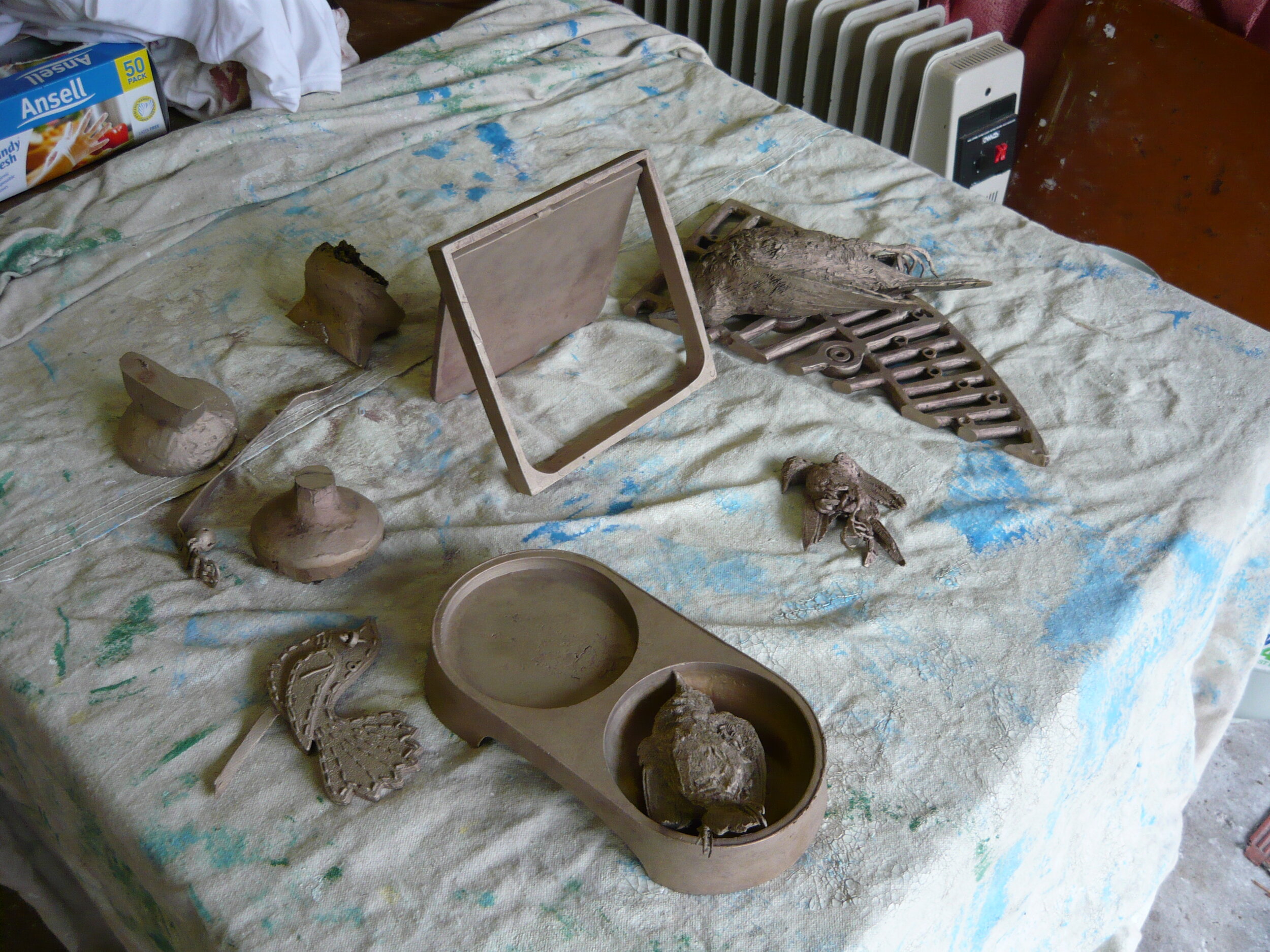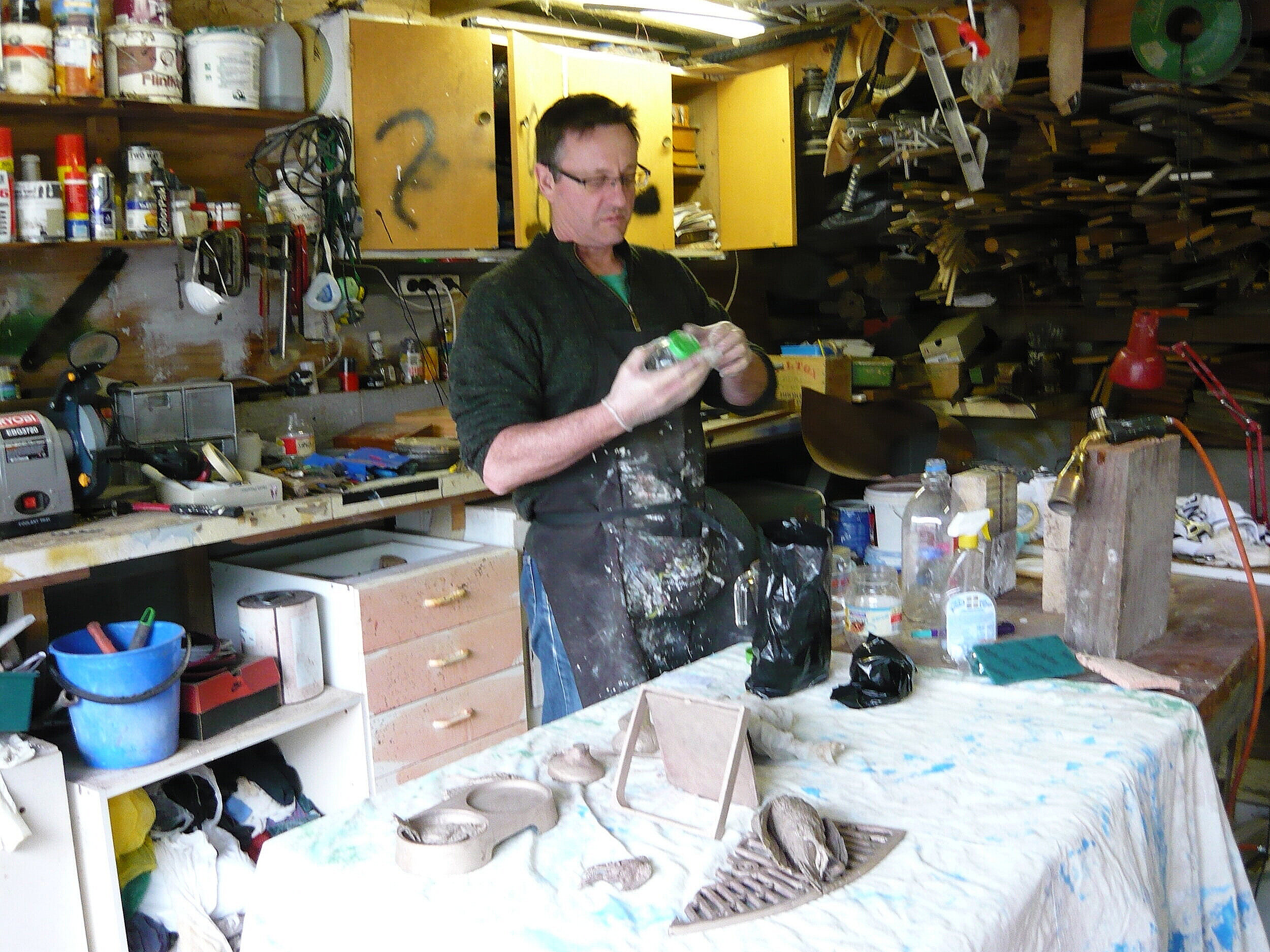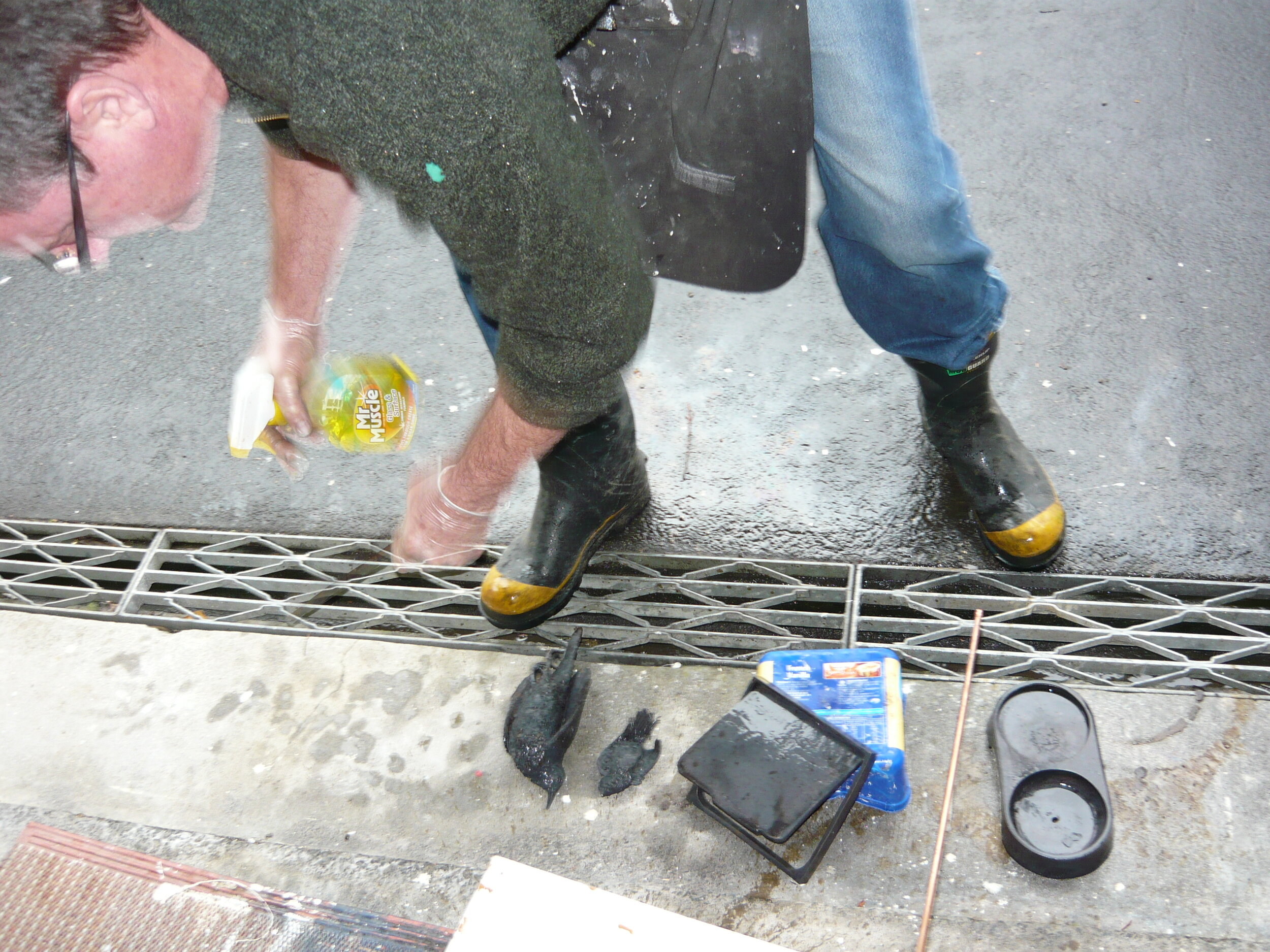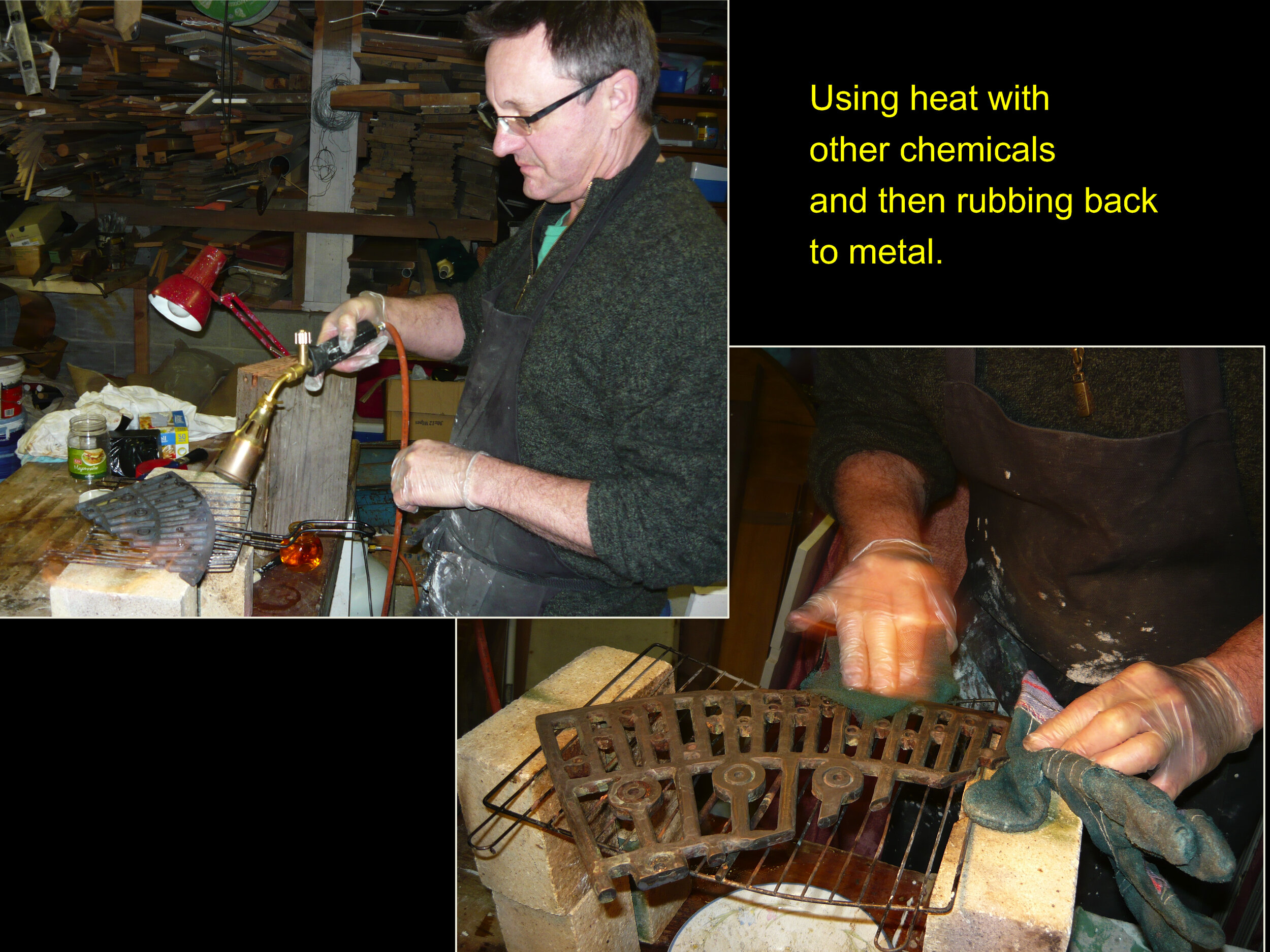Making of: Unwitting Collusion
Wax (in this case) and / or combustible materials are used to make the ‘positive’ of the object to be cast in bronze.
The ceramic shell of the mold is then built up progressively, in a room of constant temperature (or as near as possible). This involves up to 8x coatings from fine, then more coarse ceramic materials.
The wax or other material is then burnt out (not shown here), so there is a ‘negative’ cavity in the mold, where the bronze will enter. This is the ‘lost-wax’ aspect, so each casting is a unique piece.
The casting method shown here involves attaching the ‘crucible’ (with pieces of bronze in it), to the sprue (funnel part) of the mold. This means that the bronze is actually heated inside the mold - not separately, as usualy done.
Both the mold and crucible are then heated in a makeshift furnace as seen below. This uses a large bore torch and LPG gas from a standard bbq bottle.
A stainless steel rod is pushed through the little inspection hole shown in the mold, to test it when the bronze is ready to pour - it comes out clean (like testing a cake), when the metal is ready.
Using large tongs (and protective gear of course), the mold and crucible are taken from the furnace and inverted, so that the bronze runs into the mold cavity.
It is left to cool naturally for about an hour, then placed into cold water, to then start the process of taking the ceramic shell mold material off - this process can be time consuming, as the shell is very hard.
The bronze objects have the sprues and vents cut off (these are cast in bronze with the object) and ground back. Note that one image (blackbird) has a repair weld, so casting can have irregularities, no matter how well you plan.
Prior to doing a patina (chemicals and heat to change the colour of the metal), the objects are bead / sand blasted to get rid of oxidation on the surface.
The final action is to wax the object to stabilise the patina and prevent further chemical action from the surrounding air.























